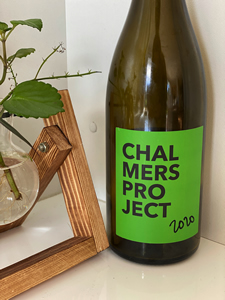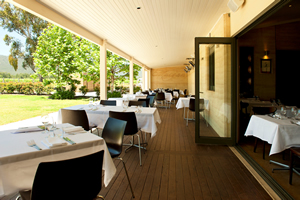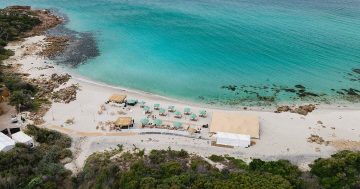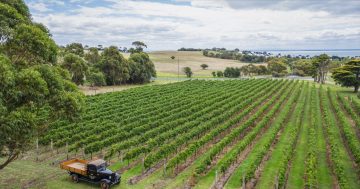By Christine Salins.

Chalmers Project Nosiola
When I’m eating Italian dishes, it always seems like such a natural fit to pair them with Italian varietals. When the wine and the food are born out of the same earth, the two go together hand in glove, thanks to the magical concept that wine folk call terroir.
Italian varieties thrive in Australia and increasingly we are seeing varieties that many people have never heard of – wines like the Pecorino featured in this column late last year. (Yes, it is a wine variety, not just a cheese.) Primo Estate in South Australia’s McLaren Vale is producing it, along with superb Nebbiolo and other Italian varieties and styles – a nod to owner Joe Grilli’s Italian heritage.
At Broke, in the Hunter Valley, Margan is like a little slice of Italy right down to its restaurant, kitchen garden and beautiful cellar door inspired by Lisa and Andrew Margan’s visits to Italy. Margan was the first in the Hunter to plant Barbera, doing so in 1998 with cuttings from an original Italian clone. It wanted to branch out from iconic Hunter varietals like Semillon and Shiraz and in doing so, became a pioneer of alternative varieties.
Many of the Italian varieties planted in Australia have their origins in vineyards at Merbein (near Mildura) and Heathcote (Victoria) run by the Chalmers family: Bruce and Jenni Chalmers, their daughters Kim and Tennille, and Kim’s husband Bart van Olphen.

Margan Wines Hunter Valley
Through importing varieties from Mediterranean countries where grapes retain their acidity in hot, dry conditions, Chalmers has had a huge influence on the diversification of Australian vineyards.
One of their Merbein vineyards, the Bush Vine Block, is pushing boundaries in the hot, dry Murray Darling region. By planting particular varieties from Sicily and the southern Italian mainland, and with the (very sparing) use of overhead spray irrigation, the Chalmers are having great results with Inzolia, a Sicilian white, and Negroamaro, a red from Puglia. Keep an eye out for the first releases of these in early July.
Viva Italia!
Heart of Gold 2021 Vermentino, $27: I came to appreciate Vermentino while visiting Sardinia, where the variety thrives. This one is from a boutique producer in Bendigo, tasted during a recent visit to the Symposium of Australian Gastronomy. It is aromatic and bright with a zingy, fresh acidity and enticing melon, peach and citrus notes. Medium-bodied with a long finish, it’s one to enjoy on the back deck when the weather is warmer.
Chalmers Project 2020 Nosiola Partial Skins, $32: There’s a high chance you haven’t heard of Nosiola. It’s a white grape native to Trentino and traditionally botrytised for Vin Santo dessert wine. More recently in Italy it’s been revived as a dry table wine. Chalmers is making a clean, simple version with just 9.7% alcohol, making it particularly appealing for those who are trying to drink more lightly. Friends who visited Chalmers with Mildura chef Stefano de Pieri (a great supporter of Chalmers’ wines) introduced us to this lovely drop. Despite being soft and elegant, it has great complexity with distinct hazelnut notes. Try it as an aperitif, with antipasti, seafood or chicken.
Montevecchio Rosso 2019 Field Blend, $25: Another one from Chalmers, this is a mixed bag of reds including some you might not have heard of. A field blend from Chalmers’ Heathcote vineyard, it is 40% Lagrein along with smaller portions of Nero d’Avola, Pavana, Piedirosso, Sangiovese and Aglianico. The grapes are hand-picked, co-fermented and basket-pressed, the result a bright and generously flavoured medium-bodied wine with blackberry and cherry notes and a little savoury/spice. We enjoyed it with duck cassoulet.
Margan 2019 ‘Ceres Hill’ Barbera, $40: Barbera is a beautiful food wine – that is, it pairs easily with a wide range of dishes. Lighter in body and alcohol than many reds, it has enough acid to cut through richer meats like duck and lamb. I tasted this one at Roundhouse in the gorgeous new Crystalbrook Kingsley in Newcastle. Paired with Honey and 5-spice duck breast, it was silky smooth with bright raspberry, cherry and star anise notes. I’ve long been a fan of Margan but it was quite some time since I’d enjoyed their Barbera. It’s great to see how the style has evolved into a really classy wine.
Sevenhill 2021 Inigo Barbera, $28: This Clare Valley red is medium-bodied but more intense than the Margan Barbera, its alcohol content 15% compared with Margan’s 13.5%. Spicy and savoury with hints of licorice and vanilla, it is earthy and even a little funky. That’s offset with sweet cherry and plum notes, all wonderfully expressive and a joy to drink.











